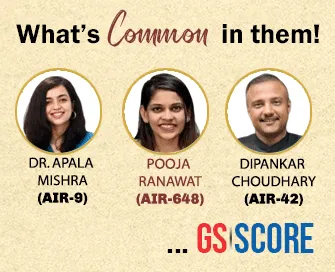

18th August 2023 (7 Topics)
Editorials
Context:
The Supreme Court (SC) of India has taken an important step by releasing guidelines to take on harmful gender stereotypes that perpetuate inequalities and laid down a set of dos and don’ts for judicial decision-making via writing, the Handbook on Combating Gender Stereotypes.
Changes introduced through ‘Handbook’:
- To break gender-based norms: A host of derogatory and seemingly mild adjectives have been dropped too while referring to women.
- Words changed: Instead of “affair”, it will be notified to say a “relationship outside of marriage”; similarly, for “adulteress”, the preferred usage is a “woman who has engaged in sexual relations outside of marriage”.
- Significance: It will lead to exclusion and discrimination, it identifies common presumptions about the way sexual harassment, assault, rape and other violent crimes which are viewed skewed against women.
Breaking Stereotypes against Women:
- Considering consent of women as ‘priority’: One of the stereotypes the Court shatters is women who do not wear traditional clothes and smoke or drink are asking for trouble, and drives home the important point of consent.
- Giving equality in abilities: Courts should take social realities and other challenges facing women seriously. It is wrong to assume that women are “overly emotional, illogical, and cannot take decisions”.
- Women’s bodily rights: It is also a stereotypical presumption that all women want to have children.
Need to address Issues for women in Indian society:
- Making women financially independent: In a largely patriarchal society, girls are often forced to pick marriage as a way out to avoid social stigma, and not education and a career.
- Burden of ‘Caregiving’: Fundamental changes need to be made to shun all stereotypes that women are more nurturing and better suited to care for others, and should do all household chores.
- Way forward: The handbook could also be a catalyst for change right down to the societal level.


Editorials
Context:
Recently, Ahmedabad hosted the Urban 20 (U20) summit. In the history of G20 meetings, the Summit was the sixth of its kind.
What is U20?
- Establishment- U20, established in 2018 to generate discussions among G20 members on urban issues, was first chaired and hosted by the city of Buenos Aires. For this year, the leadership was handed over to Ahmedabad as the 2023 Chair
- City Diplomacy- Urban 20 or U20 is a city diplomacy initiative, comprising cities from G20 countries.
- Role- U20 plays a vital role in contributing perspectives, concerns, and ideas from cities to inform and enrich the overall G20 negotiations.
Communiqué published by the U20 meet:
- Six point message- It gives a promising six-point message like encouraging environmentally responsible behaviours, ensuring water security etc.
- Climate justice and equality- While being heavy on the agenda of climate change and climate justice, the Communiqué also argues for equality and justice in urban development.
- Efficient urban development- The Summit was attended by mayors from member countries such as Argentina and the USA, both of which are highly urbanised and have shown how urban development can be efficient and equitable.
Why was Ahmedabad chosen for this summit?
- Development Goals- Ahmedabad is a very good example of how cities in the Global South can achieve infrastructural development goals.
- Innovative policies- The city has been comparatively successful in its implementation of innovative and liberal urban planning policies.
- Effective utilisation of public spaces- Ahmedabad has also shown what good quality public spaces can do for a city’s residents and its businesses.


Editorials
Context:
The visit of the India’s three former Defence service Chiefs to Taiwan is going to be a path breaking event in an era in which more than physical standoffs will be in the grey zone & the cognitive domain and psychological targeting which will take the upper hand.
About the visit:
- Surprising Seminar Participation: The presence of former Indian Service Chiefs at a seminar in Taiwan has caught attention, surprising both the public and military personnel in India.
- Enhancing India's Efforts: Despite recent progress, there is substantial room for India to further develop its military diplomacy endeavors.
- Key Aspects of Military Diplomacy: Military diplomacy encompasses a range of activities including joint training, technological partnerships, equipment procurement, maneuvers, and attending significant events. Port calls by naval ships play a pivotal role, contributing to trust-building and international cooperation.
Significance of Armed forces cooperation:
- Mutual Trust and Diplomacy: Military diplomacy, building trust between armed forces of different countries, serves as bedrock for strong diplomatic relations.
- Supporting political diplomacy: It is often said that political diplomacy relies on military diplomacy to establish goodwill and cooperation.
- Symbolic Participation: Participation of military contingents in national events of friendly countries and hosting foreign units during significant occasions, like parades, adds to the ceremonial grandeur and reinforces bilateral ties.
India’s enhanced engagement and presence:
- Partnering with multiple nations: India engaged in over 20 major joint exercises in 2022, fostering cooperation and interoperability with partner nations.
- Expansion of Defence Attaches (DAs): presence in diplomatic missions and increased military presence in various regions reflects India's growing strategic stature on the global stage.
- Aspirations: India's wants to grow global prominence via its economic expansion, political stability, technological advancements, and increased military capabilities.




